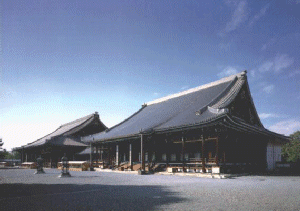- Jôdo-Shinshû
- The True Pure Land School (Jôdo-Shinshû) is one of the schools of Japanese Buddhism belonging to the Greater Vehicle (Mahâyana) and a part of the Pure Land Buddhism Tradition.
Its name is shortened to Shinshû or Shin Buddhism.
- It follows the teachings of its founder Shinran (1173-1263) and of his successors.
|
|
 Calligraphy of the Name "Namo Amida Butsu" by Shinran (Hompa-Honganji) |


